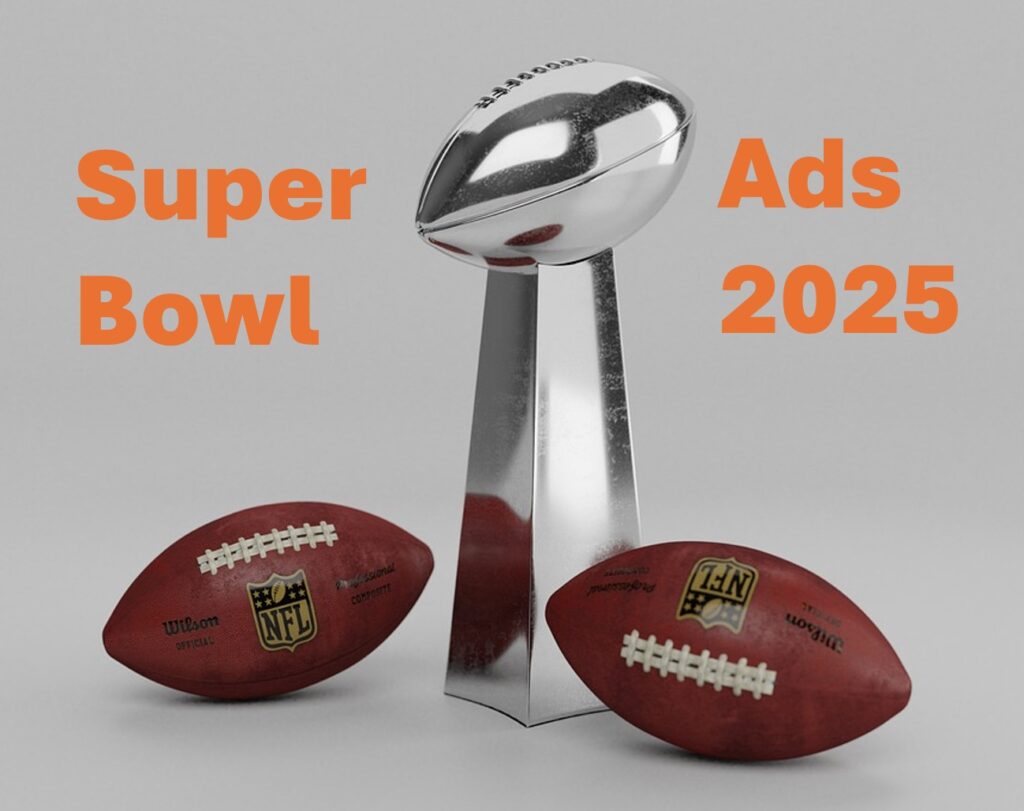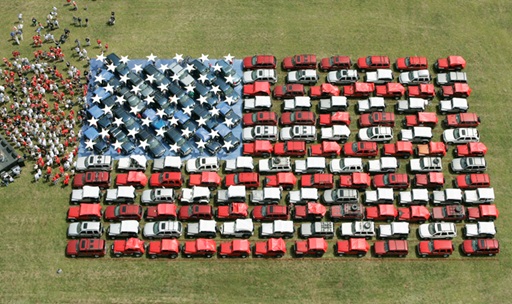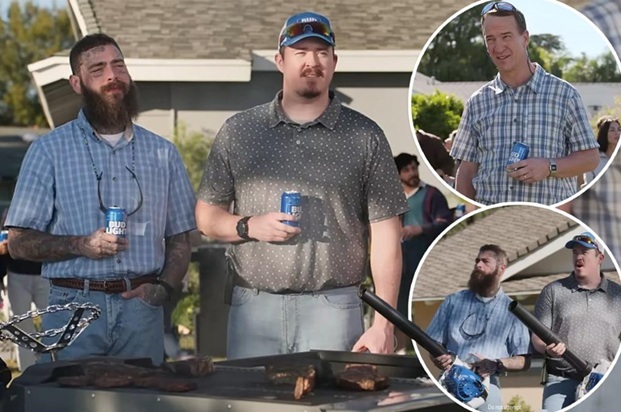The 2025 Super Bowl Ads remind me of a sinking ship. The ship tips right, everyone rushes to the left. The ship tips left; everyone rushes to the right. But the ship sinks anyway. That’s exactly what Super Bowl 2025 ads were like. Last year, brands on the Super Bowl were jumping on the DEI bandwagon, going out of their way to claim black and transgender credentials. This year, they all rushed the other way, doing everything possible to assert their conservatism and patriotism.
The overall flavor of the Super Bowl ads was bland and boring. Unlike last year, brands didn’t go out on a limb, didn’t do unexpected, crazy things. It was a return to the conventional, not daring or shocking or experimental. Were they the best way to use marketing budgets?
You can see this from the celebrities they used. They played it safe, very safe. A parade of throwback celebrities, known and loved once perhaps, but now outdated, passé. Harrison Ford, Kevin Costner, Billy Crystal, Meg Ryan, Kevin Bacon. Compare this with last year’s Super Bowl, when Beyonce stole the show with her surprise announcement of her new Renaissance album.
And an overall retreat from DEI in Super Bowl ads
So many white men
Paul Hiebert cites a long list in Adweek. It includes Glen Powell, Adam Devine, Harrison Ford, Chris Pratt, Chris Hemsworth, Post Malone, Shane Gillis, Matt Damon, David Beckham, Pete Davidson, Gordon Ramsay, and Barry Keoghan. Tom Brady, Payton Manning, and Matthew McConaughey all appeared in more than one commercial. Super Bowl brand advertising featured a significantly higher percentage of light-skinned actors, at 69%, than in previous years. The percentage of white men in the US population is only 36%.
Back to sexual stereotypes
Carl’s Jr. brought back its racy bikini-clad models’ format, ditched 8 years ago. It was quite extreme. The ad featured Tik Tok party girl Alix Earle (7 million followers!) strutting through a car wash in only a bikini. She was promoting the calorie stuffed ‘hangover burger’ for football fans needing a pick-me-up the day after the Super Bowl. As Slate noticed, it was an obvious call-back to the infamous Paris Hilton commercial from 2005. In that Super Bowl ad, she similarly ate a gross-looking burger while washing a car in a body-clinging black swimsuit. Last year, a marketing manager would have been fired for producing an ad like this.
Bud Light and macho men resurfaced. Still licking its wounds from its disastrous partnership with the transgender TikTok star Dylan Mulvaney, the brand has gone back to its redneck roots. ‘Big Men on Cul-de-Sac shows Post Malone, Shane Gillis, and Peyton Manning a hosting a neighborhood party.
Patriotism
Patriotism was a strong element of many of this year’s Super Bowl ads and of the half-time show. The most overt commercial was Jeep starring Harrison Ford. The ad played on Americana, as USA Today reported: “Freedom is for everybody. But it isn’t free, it’s earned,” Ford said over archival footage of Jeeps in World War II and a soldier hugging his child. “There are real heroes in the world – but not the ones in the movies.” More exciting patriotic references were part of Kenneth Lamar’s half time show, which included an Uncle Sam character, red, white and blue lighting and dancers dressed in the same three colors.
The importance of authenticity
Which Super Bowl brands benefited from the ads? The ones who were authentic, who were true to their brand essence and purpose. To quote from Hamlet: “To thine own self be true.”
Male ego, sex and patriotism may be authentic
For some brands, macho and sexual stereotyping and patriotism represent authenticity.
The Carl’s Jr. brand is authentically about selling hamburgers through sex
This used to be the subject of all its ads. It even put out a press release in 2011 that said, ‘We believe in putting hot models in our commercials, because ugly ones don’t sell burgers’. It later went away from this, saying that it wanted to tell a ‘broader story’, but this never really worked. It isn’t who they are.
The Jeep brand has always been about America and the American flag
It really is part of the brand essence. Earlier Jeep promotions included sponsorship of the National Anthem Project, an effort to teach Americans the words to ‘The Star-Spangled Banner. In one event, 140 red, white and blue Jeeps were arranged to form an American flag. Jeep now puts the American flag on all new vehicles, to emphasize the brand’s American origin and manufacture.
For Bud Light, authenticity may not be enough
The Bud Light brand has now realized who its core customers are and developed advertising directed at them. This is unlikely to be enough to restore the brand’s fortunes after its famous “brand divorce” from its consumers. Sales have plummeted; Bud Light’s market share has halved. Bud Light has lost its #1 position and now ranks at #3, behind Modelo and Michelob. Why is recovery unlikely? Bud Light lacked differentiation. It was easy for customers to switch, because there was no obvious reason to prefer the brand over competitors. It’s a sad tale and a lesson for other brands. A strong brand communicates a clear purpose and vision, enshrined in the product. It gives customers a reason to prefer it over competitors and to stick with it when times are tough.
For other brands, DEI is authentic
For others, DEI is authentic to their brands, and they have stuck to it. Among them are Costco, Apple, Ben & Jerry’s, and Delta Airlines. At Apple, Tim Cook has said: “‘We strive to create a culture of belonging.” Costco has made it clear that it believes that “creativity and innovation in the merchandise and services that we offer” lead to greater customer satisfaction and are intrinsic to its values. Ben & Jerry’s is doubling down on its core values, “We believe that ice cream can change the world. We have a progressive, nonpartisan social mission that seeks to meet human needs and eliminate injustices in our local, national, and international communities by integrating these concerns in our day-to-day business activities.” MAGA is threatening to boycott the brand for its DEI advocacy. Most of these brands did not run Super Bowl ads, though Apple did sponsor the half time show.
Super Bowl ads really sort out the sheep from the goats, the authentic from the inauthentic
The themes in Super Bowl ads illustrate what is happening with brands in general. The vast majority had the people rushing from side to side on the sinking ship. They are falling over themselves in a race to abandon their DEI efforts and reposition themselves to fit in with the culture of the new administration. The ones who stay true to their brand essence, who remain authentic, whether this means espousing progressive or conservative values, are the ones who will win over time and create the greatest shareholder value.
The race to conform helped to make this year’s Super Bowl ads mostly boring. The game itself was less boring, despite the clear dominance of the Eagles from the start. The outcome was at least unexpected. No-one thought the Eagles would make a clean sweep of it.
What will Taylor Swift?
From a brand point of view, it’s not good for Taylor Swift. She noticeably kept a low profile at the game. Parading around with Travis Kelce would not have helped her image. She is not the world’s best singer, but she is perhaps the world’s best celebrity brand promoter. What will happen to her relationship with Travis Kelce? Will she ditch him? From a short-term celebrity brand perspective, she should, but I hope she sticks with her values and doesn’t.
It is Kendrick Lamar who should have the last word beyond the Super Bowl ads
Beyond the messages in the Super Bowl ads, his brilliant, patriotic performance contained a coded message. Despite its outward appearance, he remained authentic to his brand, which is all about DEI. Uncle Sam meant Uncle Tom. At various points, parts of the Super Bowl crowd were lit up to formulate the sentence “WARNING WRONG WAY.” The dancers split up to show a society fractured.


